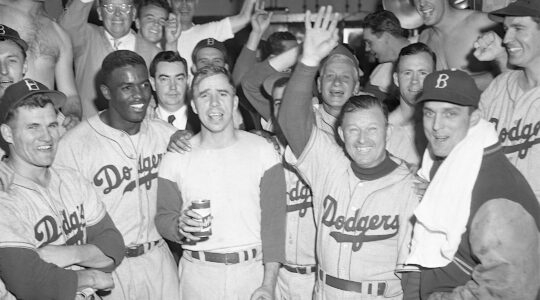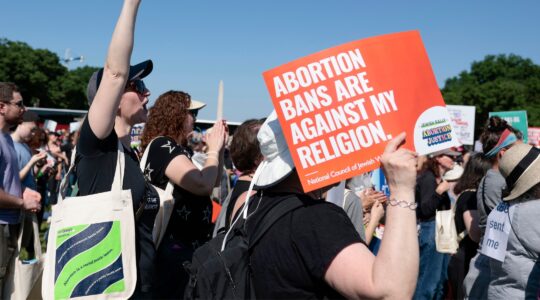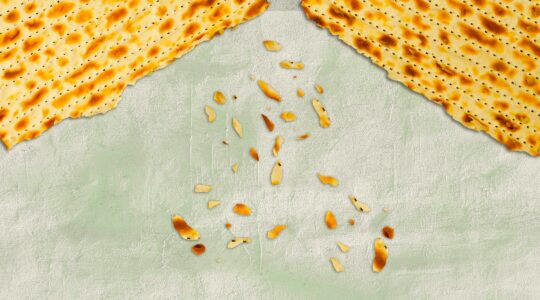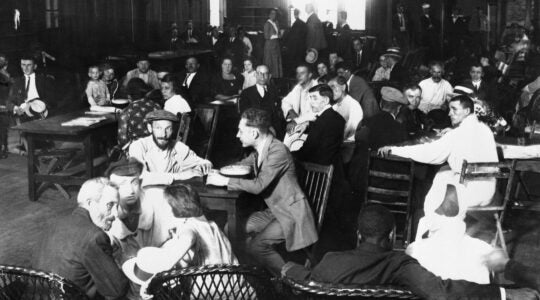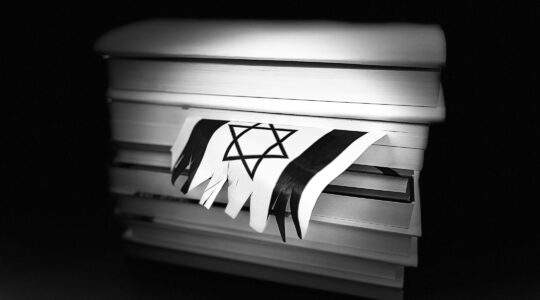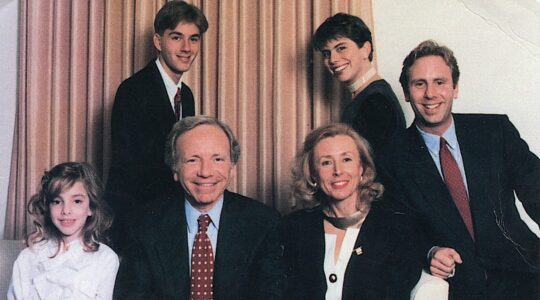NEW YORK (JTA) – In “Daring to Resist: Jewish Defiance in the Holocaust,” the catalog that accompanies the exhibit of the same name, the director of the Museum of Jewish Heritage-A Living Memorial to the Holocaust here puts into print the question on everyone’s lips when the survivors were liberated.
“Context is everything,” David Marwell writes. “In trying to understand the study of Jewish resistance during the Holocaust, this dictum becomes especially critical. If the reader has any doubts, he or she need only think about the oft-repeated question, ‘Why did the Jews go like sheep to the slaughter?’ ”
Even now, 69 years after Kristallnacht and the beginning of the Holocaust, survivors are still putting to rest the accusations that they went like sheep to their fates. Some children, prompted by the attitudes of non-survivors in their milieu, even asked their survivor parents that question.
As Tom Segev’s “Seventh Million” made clear years ago, and a recent demonstration in the streets of Jerusalem underlined, to those without context Holocaust survivors are dismissed as bars of soap, “sabon.” Worse, many American Jews snidely wondered about the survivors, and some still do, “What did they do in order to survive?”
In the catalog’s final essay, psychologist Eva Fogelman notes that everyone blames the victim. It goes way back to Job: “Who ever perished, being innocent?” But Job’s friends didn’t understand him, and those who don’t understand the variations of Jewish defiance in the Holocaust simply don’t get it. To remain human, to maintain a shred of dignity in the midst of torturous mayhem, was to defy everything for which the Nazis stood.
The definition of resistance wasn’t helped by scholars and pundits who counted only armed resistance and measured success by counting the number of dead Germans killed by Jews.
Earlier this month, to honor the achievements of the distinguished Holocaust scholar Israel Gutman, four stellar academics – Yehuda Bauer, Judy Baumel-Schwartz, Robert Shapiro and David Engel – stood before an audience of about 200 and put Jewish resistance in the Holocaust into context.
Bauer was especially passionate. Amazingly, it was an Israeli who understood that what survivors and the Second Generation years ago called “spiritual resistance” was as important as armed resistance – and often much harder to maintain. The scholars broke it down to talk about women resisters, and religious, political and cultural resistance.
Bauer insisted that these stories of defiance be told and taught, otherwise future generations wouldn’t know how to resist those who try to dehumanize them and those who manipulate them politically.
He is absolutely right. More interesting is that those who grew up in survivor communities were surrounded by heroes who didn’t look or act like heroes at home. Some were short and dumpy, some could never master English or modern Hebrew, and few would talk about their experiences. But walk through the exhibit and you may find your neighbors on the walls and in the videos, or read about them in the catalog.
You realize that you know other heroes who deserve to be up on those walls and in those pages, but there just isn’t enough room. They did everything from observing Judaism, blowing up ammunition trains, producing Yiddish theater and concerts, and surviving under impossible circumstances.
When the museum first opened, the curator at the time, Yitzchak Mais, gave me, the daughter of survivors, a preview.
“Do you know about spiritual resistance?” I asked.
“Yes,” he replied.
I described a tiny piece of cardboard with Hebrew letters shown to me by a survivor in the Borough Park section of Brooklyn years before. The survivor had used it in hiding to teach her little brother the Hebrew alphabet.
“It’s in the showcase on the second floor,” Mais said.
That piece of cardboard is a solid reminder of how tough the survivors still must be. It’s 62 years since the war ended and they still have to defy the powers that be to maintain their dignity as they face disease and death.
Unfortunately, those who owe the survivors the most are those who stole from them, treated them with contempt and appropriated their stories. But the survivors never give up. Our survivors, those who came from “there,” have lots to teach us. They are role models of whom we should be proud. They are not statistics that drain the economy. They are not sabon.
The Jews made their voices heard long ago, in hiding, in the camps, ghettos and forests. They made their voices heard when deniers began crawling out of the woodwork in the 1970s, and they make their voices heard now in their declining years. They demand that we remember. They demand the right to medical care, food and shelter so they can live and die with dignity. It’s a battle they have already fought.
As Marwell so eloquently says, “Just because Jews were powerless does not mean they were passive.”
Not even when they get old.
Jeanette Friedman, a freelance writer and editor, is a founder of the Second Generation movement.
